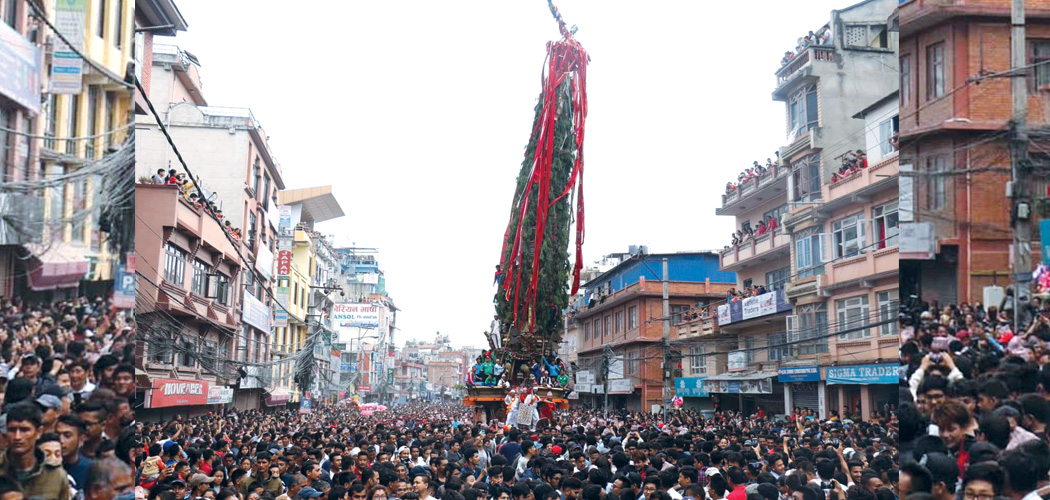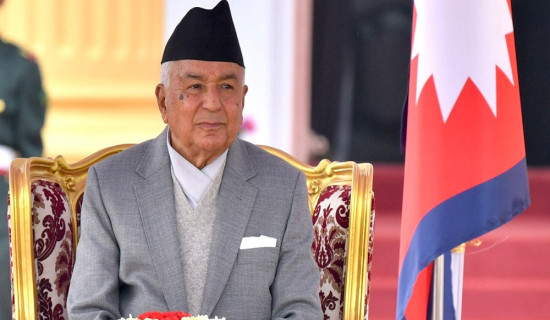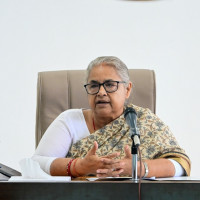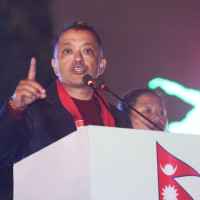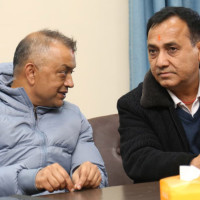- Thursday, 15 January 2026
Patan locals excited about Rato Machhindranath Jatra
By Aashish Mishra
Lalitpur, Apr. 29: With the ceremony to place the idol of Rato Machhindranath on its wooden carriage under construction at Pulchowk, Lalitpur, scheduled for May 1, the nation’s longest chariot festival is set to begin next week.
Provided the situation with the COVID-19 pandemic does not aggravate, this will be the first time in two years the festival popularly known as Rato Machhindranath Jatra will be held on full scale, as per the community organisations involved in the chariot fiesta.
And this has the locals of the core city of the district excited. “We will get to welcome Karunamaya into our localities once again,” said Danish Pradhan, a resident of Tyagal, Lalitpur. Karunamaya, meaning full of compassion, is one of the many names given to Rato Machhindranath whose chariot is towed to various destinations in Lalitpur every year from April/May to June/July. Worshipping the red deity this way is believed to provide the city and its residents with ample rain and a good harvest while disrespecting or ignoring the Jatra is considered to invite misfortune.
“That is why Lalitpur denizens did not allow the festival to be cancelled,” 26-year-old Pradhan, who claims to go every year with his friends to pull the chariot from Gabahal to Sundhara, told The Rising Nepal.
“Albeit in a symbolic manner, we marked the Jatra and kept the tradition alive. This year though, we will get to celebrate it as grandly as before the pandemic,” he said excitedly.
Hari Sayami also shared Pradhan’s enthusiasm. But for him, it was less about the festival and more about the familial closeness it brought.
Every place the chariot of the Rato Machhindranath stops at during the course of the festival holds a feast which offers a chance for the family to get together and exchange happiness, said Sayami, 48.
“We discover and re-discover relationships and meet relatives after months or even years apart,” Sayami said, remembering how his own wedding was fixed by an aunt who came to his house during Machhindranath Jatra some 20 odd years ago. “You forget the hardships of life for a day or two.”
Dil Kumar Barahi, leader of the Barahi Da Guthi which represents the group of carpenters who carve and assemble the wooden parts of the nine-storey conical wagon, said that work on constructing the chariot was moving forward nicely.
Seeing the carriage steadily rise gave great pleasure to Dhanvi Lama as well. A native of Lagankhel, the 42-year-old walks to Pulchowk every day to see the chariot-makers at work. “This is our pride and our identity and it is great that we will be able to celebrate fully after two years of disturbance,” she said.
The 48-foot tall Rato Machhindranath chariot, worshipped by both Hindus and Buddhists, is pulled from Pulchowk to Jawalakhel via Gabahal, Mangalbazaar, Sundhara, Chakrabahil, Lagankhel and Thati every year accompanied by a musical procession.

